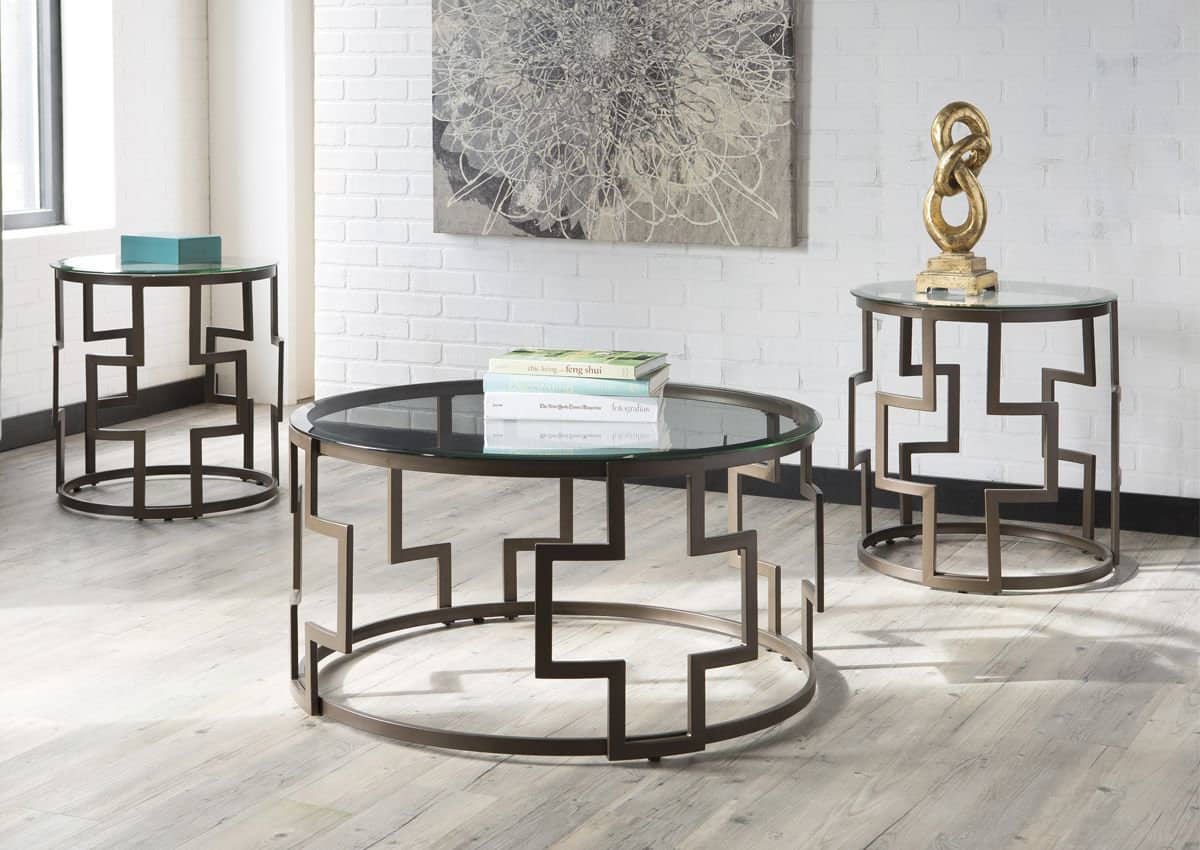Getting home late and not finding your keys can be frustrating. In such cases, most people would take refuge in a neighbor's or friend's house or use the window. Correspondingly, learn how to pick a lock with a paperclip to add to your options. Unfortunately, lock picking has long been taken as a preserve for burglars, but it is time to learn this important life hack.
Ideally, there are designated lock picks used by skilled lock pickers. Not to worry, you can improvise lock-picking tools from a simple paper clip within minutes. However, in this context, we recommend picking your locks or those only authorized to avoid turning to a criminal. Even in the case of your own locks, do it discreetly to avoid misguiding vigilant neighbors.
In light of this, learn how to pick locks with this step by step by step guide. Most importantly, the insight provided in this write-up is only applicable to most pin tumbler locks. More expensive locks like keyless door locks might be harder to pick, requiring the help of a locksmith. Nonetheless, let's learn to pick a lock with a paperclip.
What You Need
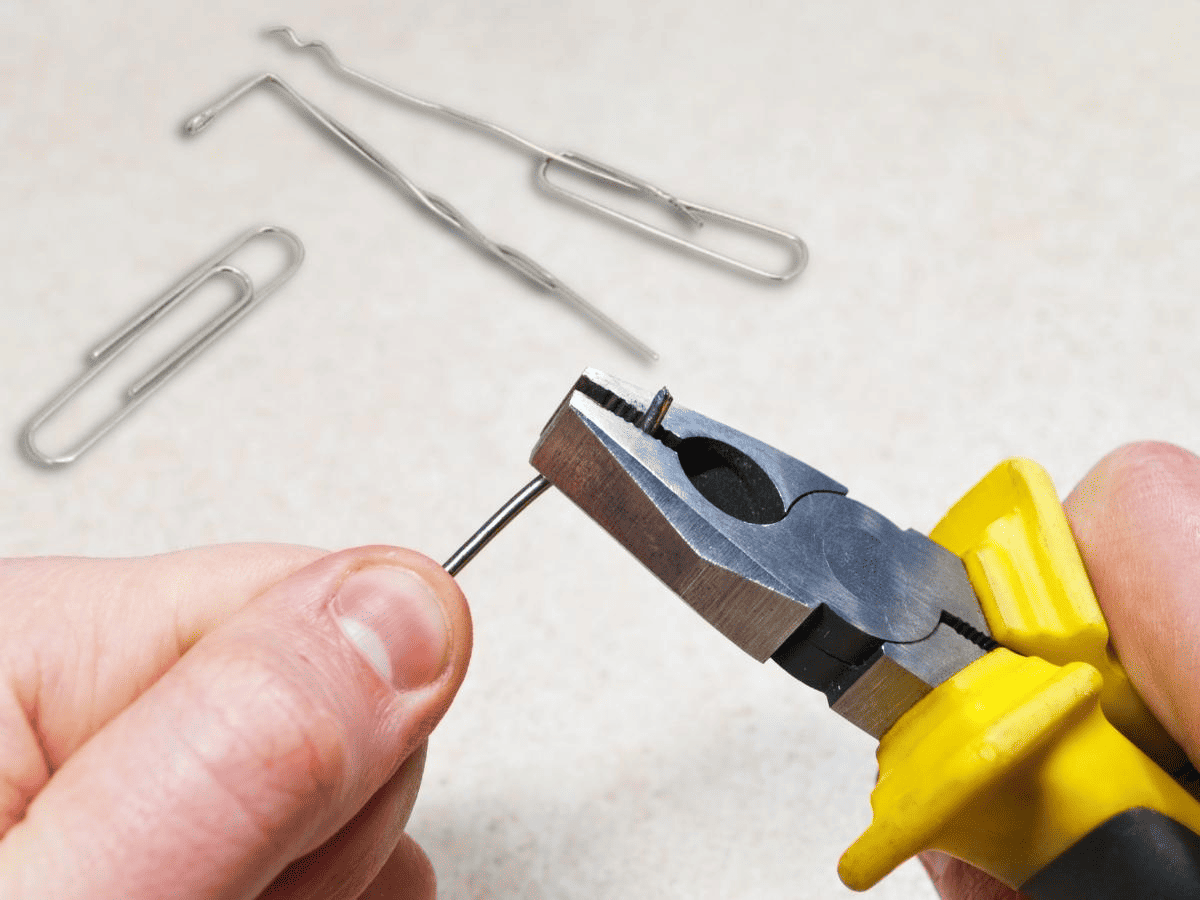
Image Credits: lockspedia.com
- Two paper clips. We recommend using metal clips since they are stronger than plastic paper clips. Also, ensure your paperclip is thin enough to fit your lock's internal diameter. Alternatively, you can opt to use bobby pins or thin wires.
- Pliers. The best pair to use is the needle-nose pliers. This type is specifically designed to bend thin wires, like in the case of jewelry-making. Nonetheless, during emergencies, any pliers will do.
- A tumbler lock. Mastering how to pick a lock with a paperclip should be done practically using a practice lock. Accordingly, a rear door lock would be ideal to avoid giving by-passers the wrong idea.
Process Of Picking A Lock With A Paperclip
Step 1: Create A Tension Wrench
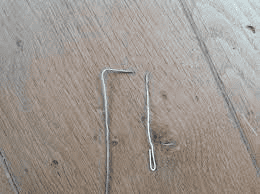
Image Credits: reddit.com
Starting on how to pick a lock with a paperclip, use your pliers to straighten your two paperclips. Ideally, unfold your paper clips on the first two bends to make them straight. After straightening, you should have an L-shaped clip with an extra loop handle. You should be careful with this first step since it will enable easy penetration into a lock.
The straight part of the tension wrench is meant to be inserted into a keyhole. However, in some cases, an all-straight tension wrench is inadequate, requiring a tiny bend at the tip. This slight curve should be an estimated 0.4 inches (1 centimeter) at a right angle (900). According to locksmiths, this bend will easily depress the pins in a lock, but it's not compulsory.
While creating a tension wrench, it is easier to use pliers. However, if it's not available, you can diligently use your fingers. In essence, we are looking for the simplest solution during emergencies.
Also, use one of the two straight wires to make a rake. Make the first ridge from the long part of the second paper clip by pinching the tip of your paper clip with the pliers. Subsequently, make three consecutive 450 bends to achieve a zig-zag shape that mimics a key's edge. In most cases, a rake is one of the best methods for amateurs with more success than a straight slip.
Step 2: Insert Your Tension Wrench Into The Keyhole
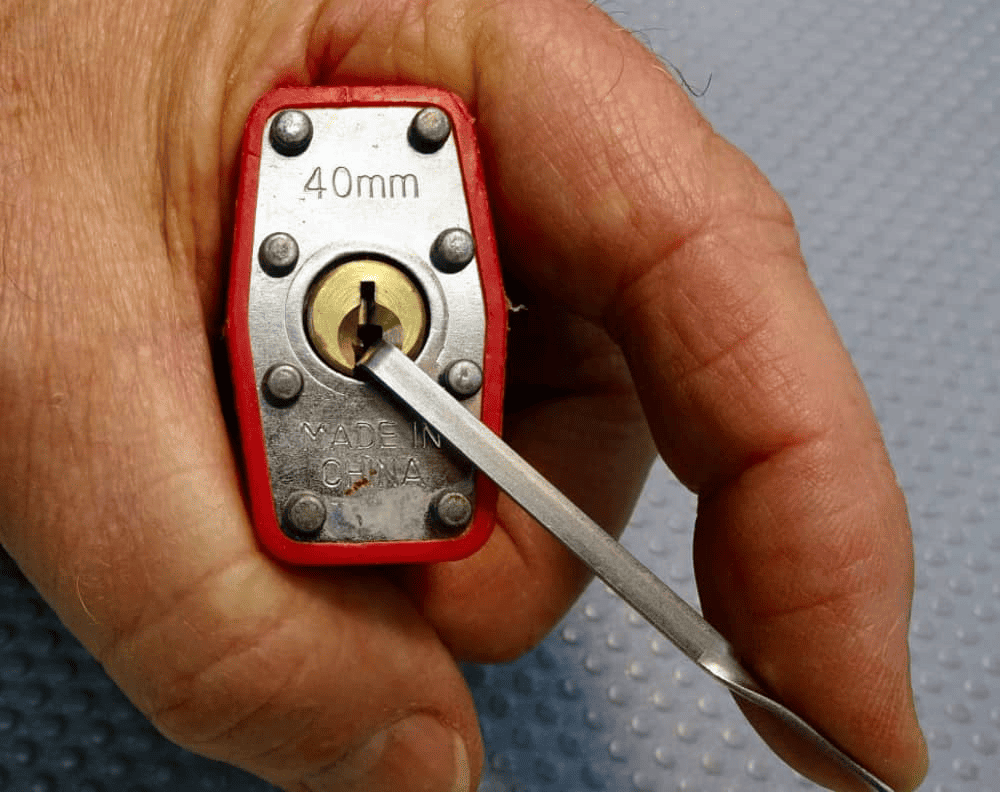
Image Credits: thecoolist.com
Insert the short end of your tension wrench and lock pick into the keyhole to start locating the pins. Ideally, a tumbler lock comes with spring-loaded driver pins, which hold down key pins to create a shear line when aligned by the correct key. Accordingly, you should start picking the first driver pin since it's the most difficult to move.
After picking tools in the keyhole, apply tension to rotate the tension wrench. Identifying the right amount of pressure to use might take a few tries. If you apply too much pressure, you will twist your lock picks, while inadequate pressure won't pick your lock. Next, apply upward pressure with the tension wrench, slightly lifting each wire to check for its stiffness.
With enough pressure, you will feel your pins inside give once your lock pick reaches the shear line. If you encounter resistance, jiggle your pick with slight tension to move the pins. Worth noting if you break your pick in your lock, you will end up replacing it entirely.
Insert The Rake
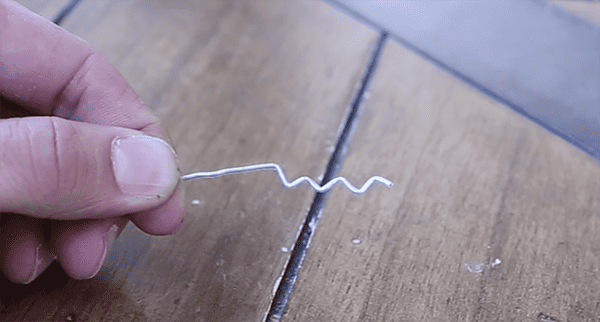
Image Credits: artofmanliness.com
The purpose of the rake is to lift the internal key pins to help the tension wrench twist the lock. Insert the rake on the upper part, all the way into the lock, on top of the tension wrench. Rake your pick as you jiggle it upwards to potentially set off a few pins.
The jiggling should be quick but without yanking the rake out. Nonetheless, the process should be smooth as you keep pressure. This process might require a bit of practice.
Step 3: Turn The Pick In The Direction The Door Lock Turns
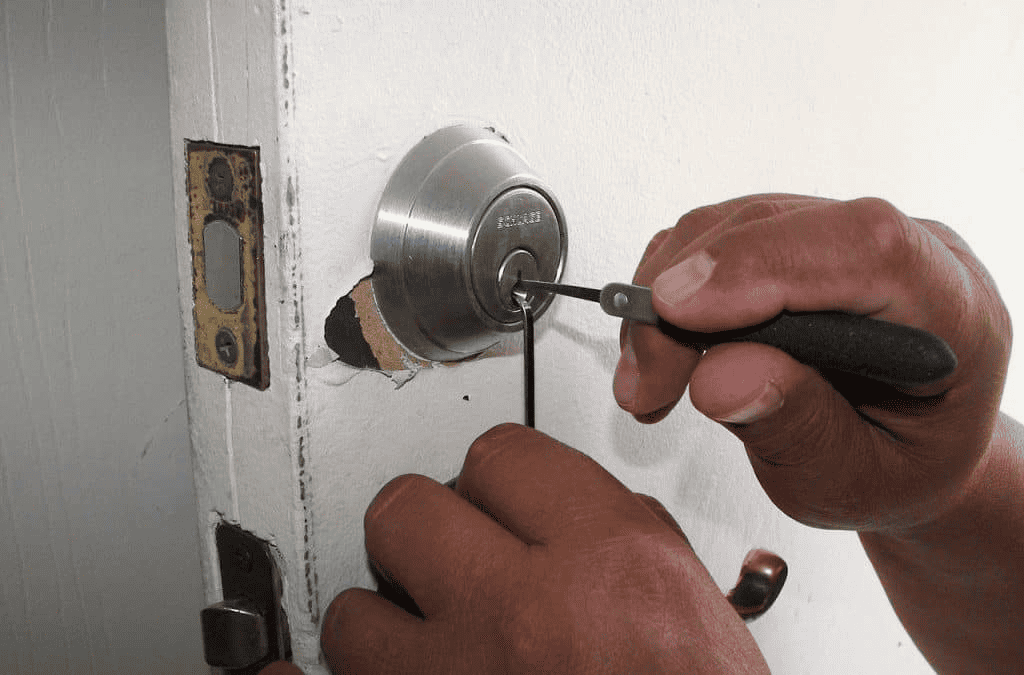
Image Credits: metrolocks.co.uk
Picking a door lock with paper clips should also include turning in the right direction to unlock it. Simply put, turn your picks in the direction a standard key would. However, we know that it can be difficult to know which side lock turns to turn your tension wrench appropriately.
If unsure about the direction your lock opens, turn clockwise. In the event you encounter much pressure, turn your wrench counter-clockwise or opposite direction. You will know you are turning your wrench to the right the lesser tension you feel when turning. In cases the sense of resistance doesn't work, you can pick any direction and switch accordingly until the lock opens.
Even with a sensitive tough, we insist on applying adequate pressure on the wrench. This aspect will enable a successful lock pick as your rake picks each pin. Therefore, you will have a 50/50 chance of picking a lock on your first try.
Step 4: Look For Lock Pins To Set Them Off
To start looking for pins in your locked door, push your rake all the way up. Typically, most common household locks come with at least five pins. Consequently, scrub your rake up and down as you apply slight twists. This technique works similarly to a key by holding the driver pin as the key pinfalls.
Consequently, you will hear a clicking sound as you unset the pins in most locks. When all the pins have been set off or unlocked, your door will unlock. Notably, smooth yet quick movements will be effective for this process while still avoiding yanking out your paperclip. As a result, picking locks is a trial-and-error process.
Repeat The Scrubbing When Necessary
Considering it is a trial and error process, repeat the raking until you have successfully set off pins inside. As you repeat, remember that adequate pressure is necessary to unlock your door, but a lot of it will cause the driver's pins not to align. Also, you will know you are unpicking the locks through a reduced resistance in case you don't hear clicking sounds.
Step 5: Torque Open
Once you push and unset all the pins, your lock will open, and you will forget you have lost your key. Bingo! You now can open most exterior and interior doors even when keys are misplaced. On doors, learn how to transform your home with steel doors. Eventually, don't forget to remove the paper clips once done.
Tips On How To Pick A Door Lock With A Paperclip
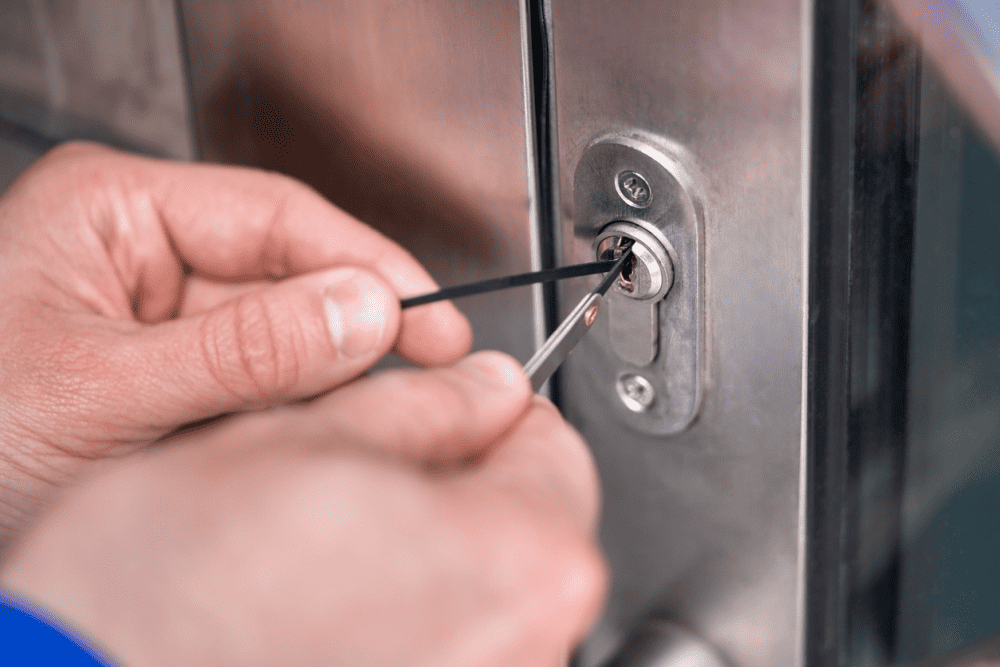
Image Credits: homedit.com
After learning how to pick a lock with a paperclip, it is also important to be meticulous during the process. With care and frequent practice, you will be able to pick any lock that comes your way, but of course, legally. To further help you with this process, here are a few tips to consider throughout the process.
1. Be Gentle
Indeed pressure is important to set off the pins, but too much of it will render the process frustrating. Furthermore, as earlier mentioned in the process, too much pressure might cause the paper clip to break or twist. Alas, in the worst-case scenario, a broken clip in a lock renders it irreparable.
As such, a heavy-handed individual should not risk using paper clips for lock picking. Ideally, don't bend it beyond 20 degrees as you twist your lock pick. Unfortunately, it might not be easy to know how much is a 20-degree bend during an emergency. Therefore, a simpler method is working with a flow and minimal tension inside the lock.
2. Perfect Through Practice
Lock-picking as an art can only be perfected through constant practice. With practice, you don't have to go through rigorous guides on 'how to pick a lock with a paperclip' in the future. Subsequently, the need for practice tells you that lock picking isn't everyone's cup of tea.
The first few tries might be frustrating despite the simplistic impression from movies. You might have to spend numerous hours fumbling with your paper clips. But, eventually, you will build on your confidence to unlock your own house and even teach others the art of lock picking.
3. Use Thin Paperclips
In as much as we insist on strong paperclips, ensure they are thin to go through the keyhole. On the contrary, thick picks might bend or break into your door lock. As a result, bending is the last thing you want while lock picking. Even as you seek to use thin paperclips, remember the more you use them, the quicker it loses its rigidity.
4. Not All Padlocks Are Equal
While picking during winter, first de-ice your lock before picking. Removing the ice will enable your paperclip lock pick to spin freely in the keyhole. Also, you might encounter an old lock with rust. This latter situation might be complicated, requiring more time with some lubrication to avoid hazardous bending.
5. Clean After Picking
After picking, you might notice some plastic fragments in the keyhole. This occurrence is common whenever you use paper clips coated with plastic. Also, the non-coated paper clips leave metallic pieces inside a lock.
To remove these fragments, clean your lock after picking. We recommend using a fine straw together with compressed air to spray these fragments out. If you use a blowing version of a lubricant, you will notice fine particles get out. Cleaning helps avoid lock jamming.
Frequently Asked Questions On Picking Locks With A Paperclip
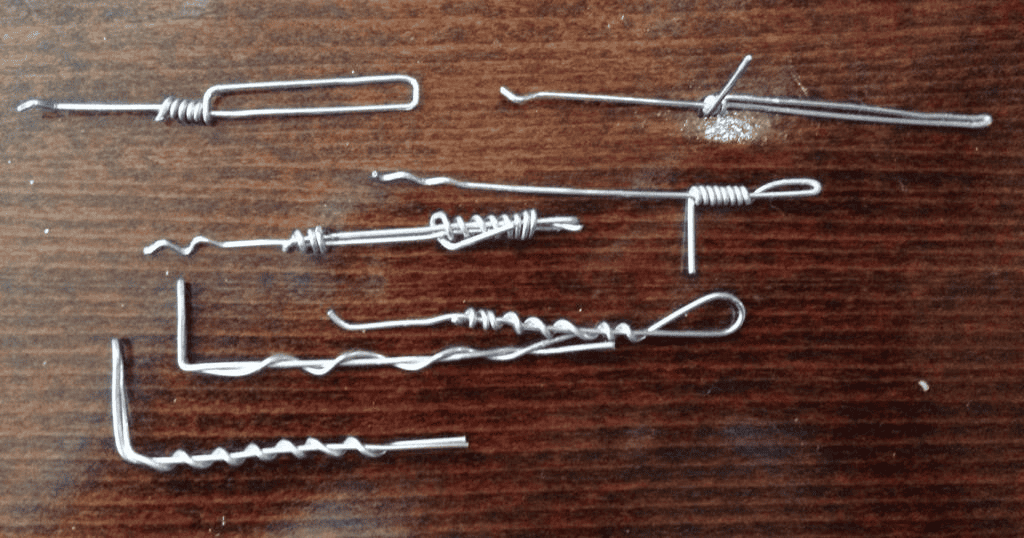
Image Credits: hackaday.com
1. Are Lock Picking Kits Illegal?
Besides using a paper clip to pick a locked door, you can opt for a lock-picking kit. If you wonder about the legality of such kits, there are no regulations governing lock picking. Therefore, whether with a kit or paper clip, you can pick any lock as long as you are the owner or have authorization.
2. Can You Damage A Lock By Picking It?
We all agree picking locks is not the desired approach to accessing your own house. Nonetheless, it can be safe for your lock if not done often. Also, lock picking might mess up your lock by damaging the internal components like springs. We have also identified that breaking a pick in a lock might render it irreparable.
3. How do you pick a lock with a paperclip without tools?
When picking a lock with a paper clip, straighten out the large edge of your paper clip twice until it is straight. Thereafter you will insert the straight end into the lock to use as a pick.
Alternatively, you can also depress the paper clips inside the lock by putting a tiny upward bend into the tip of the pick.
4. What is the best tool to pick a lock?
It’s essential that you have a tension wrench before picking up a lock. It is also referred to as a tension tool and is used in conjunction with whatever pick you choose. The tension wrench will be used to hold the pins in place as you make your way through the locks.
5. What kind of locks can I pick with a paperclip?
Not all locks can be picked using a paperclip, but you can always pick simple, cheap locks with wide-open keyways. For instance, basic master lock padlocks and deadbolts. Paperclips can not defeat more advanced locks with trickier and smaller keyways and security features.
Conclusion on How to Pick a Lock With a Paperclip
Initially, the paperclip was mostly known as an office tool used for holding sheets of paper together, but it now stands proudly as proof of human creativity. By embracing the power of this office tool, you have unlocked a world potential and perhaps even uncovered a new method in lock picking.
There is no difference between picking a lock with paper clips and picking a lock with a traditional tension wrench and rake. They are more or less the same. You need to turn two paper clips into the same tools and then pick the lock with them as you’d normally do. May your lock picking be ethical and, most importantly, successful.



